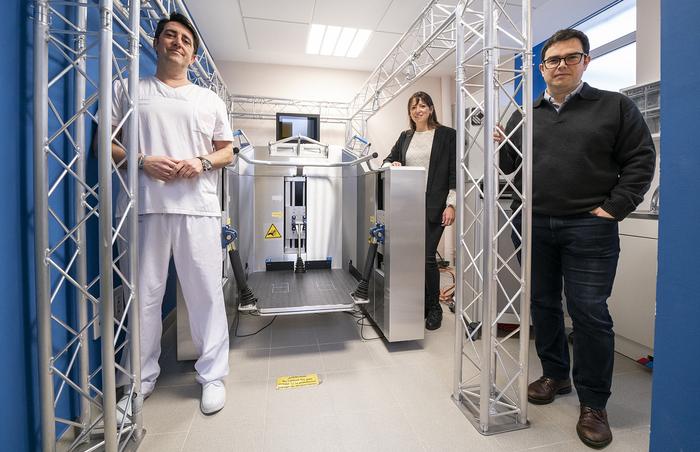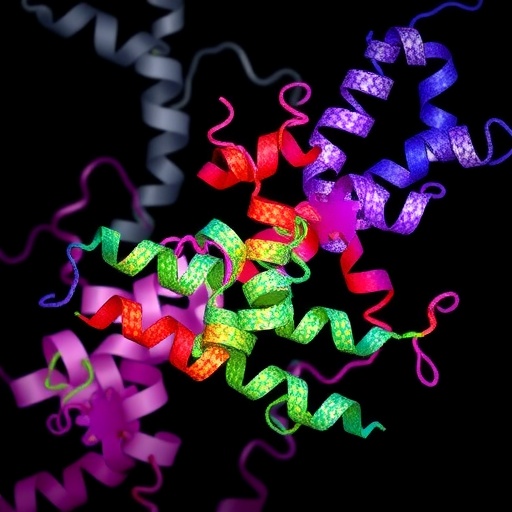In a cutting-edge development in rehabilitation technology, researchers from the University of the Basque Country’s COMPMECH group have unveiled a new prototype designed to help individuals regain balance following conditions such as stroke. With stroke being a leading cause of disability worldwide, the significance of this innovation cannot be understated. As many stroke survivors face lengthy rehabilitation processes, this prototype aims to offer a more objective and systematic assessment of patient progress.
The challenge of accurately measuring a patient’s balance has long posed a problem for healthcare professionals. Traditional methods for assessing balance are often subjective, heavily relying on the therapist’s interpretation. The COMPMECH group has made it their mission to dissolve this variability by creating a standardized measurement system. The prototype employs advanced technology to track a patient’s center of pressure, a critical determinant of balance, during various rehabilitation exercises.
The center of pressure plays a pivotal role in maintaining stability. When a person stands still or is in motion, their body continuously adjusts the weight distribution across their feet to prevent falling. This adaptive mechanism is vital for balance, especially in dynamic situations, such as standing on a bus during sudden stops or starts. By analyzing this center of pressure’s movement, the prototype can provide insights into a patient’s balance abilities and their evolution through the rehabilitation process.
The prototype’s design includes a specialized platform equipped with multiple sensors. Patients stand on this platform, and it features two primary functions aimed at assessing and stimulating balance. The first function involves dynamically altering the platform’s position. In response to the physiotherapist’s input, the platform can tilt or lift, testing the patient’s ability to maintain stability under varying conditions. This controlled stimulation serves to provoke responses that are essential for physical retraining.
Concurrent with providing stimulation, the platform’s second function is to measure the forces exerted by the patient while standing. This measurement is achieved by using four carefully positioned sensors that capture the details of the force application. The data retrieved enables the system to pinpoint the movements of the center of pressure effectively. Such precise measurements not only allow for immediate feedback to the patient but also aid in long-term tracking of their rehabilitation journey.
The innovation brought forth by this prototype is largely attributed to the engineers’ commitment to establishing reliable and repeatable metrics. Unlike traditional assessment techniques, where variables may shift based on the therapist’s discretion, every stimulus applied by this prototype is standardized in amplitude and speed. This consistency is pivotal in monitoring patients’ progress and establishing the effectiveness of different rehabilitation strategies over time.
After extensive development and refinement, the prototype was validated by a team of medical professionals at Gorliz Hospital, paving the way for clinical trials. Francisco Campa, a key researcher in the project, emphasized the success of this collaboration, applauding the medical community’s invaluable input. The collaborative spirit has led to significant advancements quickly, resulting in actual testing on patients and volunteers.
The implications of this technology extend beyond stroke victims. Balance disorders can affect a wide array of individuals, including those adapting to prosthetics and individuals who experience vertigo. As this prototype advances through clinical trials, its potentially transformative effects on enhancing patient recovery trajectories are eagerly anticipated by doctors and researchers alike.
Another compelling aspect of the COMPMECH group’s research is its interdisciplinary nature. With expertise that spans fields such as mechatronics, robotics, and biomechanics, the collective effort ensures that the prototype is not only effective but also adheres to the latest scientific and engineering principles. Their innovative approach helps bridge the gap between engineering concepts and practical medical applications.
In an age where personalized medicine and technology intersect, the role of systems like the one developed by the COMPMECH group highlights the necessity for tailored rehabilitation strategies. Each patient presents unique challenges, and having a device that can objectively assess motor responses will afford physiotherapists valuable insights that can lead to more individualized care plans.
As more data is collected from clinical trials, improvements to the prototype will likely follow. The feedback loop established by continuous testing in real-world scenarios is vital for refining the technology. Thus, the research endeavor not only aims to deliver improved rehabilitation outcomes but also provides a framework for ongoing advancements in healthcare technology.
The world of rehabilitation is on the brink of significant transformation. With successful integration of such prototypes into clinical settings, the future of recovery for patients facing balance impairments looks promising. Stakeholders in both engineering and healthcare will need to remain actively engaged to facilitate the prototype’s optimal deployment and further innovations in this crucial field.
As researchers continue refinement and further testing, their ambition is to set a new standard for balance rehabilitation. The work of the COMPMECH group showcases the profound impact that collaborative research can have—not only on scientific knowledge but also on improving lives for those who are battling the lingering effects of mobility challenges.
The initiative reflects a broader trend in healthcare, where technology and human-centered design coalesce to generate solutions that cater to diverse needs. With the right investments in clinical research and technology development, a world where recovery from impairment is not only possible but efficient offers hope to millions.
In conclusion, the introduction of this prototype marks a significant milestone in the ongoing quest to improve rehabilitation methodologies. As the design progresses into its clinical phases, both patients and healthcare professionals await the full realization of its potential, which may very well redefine balance rehabilitation practices.
Subject of Research: Mechatronic design for balance assessment and rehabilitation
Article Title: Mechatronic design of a 3 degrees of freedom parallel kinematics manipulator with integrated force plate for human balance evaluation and rehabilitation
News Publication Date: 25-Nov-2024
Web References: Link to article
References: Francisco J. Campa, Mikel Diez, Javier Corral, Erik Macho, Saioa Herrero, Charles Pinto.
Image Credits: Fernando Gómez. UPV/EHU.
Keywords: Mechatronics, Rehabilitation Technology, Balance Assessment, Stroke Recovery, Center of Pressure Measurement, Clinical Trials.
Tags: Okay





